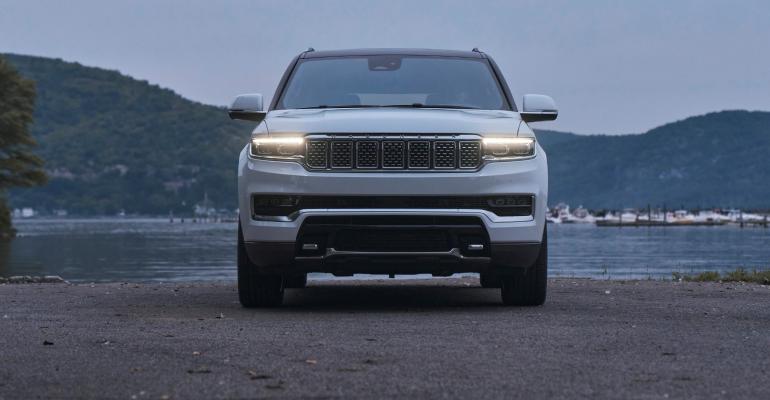The shortage of semiconductors that has slowed production across the auto industry is not likely to end this year, executives from Stellantis tell analysts as the company created by the merger of Fiat Chrysler and PSA Group releases its first full-year financial report.
Stellantis CEO Carlos Tavares notes the new company doubled its operating profit and tripled its net income, while the North American business was the most profitable part with a margin of 11.8% thanks to the strong showing from the Jeep brand.
To limit the impact of the semiconductor shortage, Stellantis is giving priority to production of high-margin models such as the new Jeep Grand Wagoneer and Ram pickups. The Ram 1500, stickered at $51,000, is now the highest priced pickup in its segment, Tavares notes.
“We believe the recovery will be very slow,” the Stellantis CEO says. “2022 will not be the year we can say we are back to normal.”
Meanwhile, Stellantis’ distribution system in North America is working on a pull rather than a push basis, improving efficiency and pumping up profitability of the automaker’s sales network, Tavares adds. “We were faster at getting price increases,” he says, while continuing to push back on costs.
“It's probably as good as it gets in terms of pricing,” Tavares notes. “The current conditions are very good for our margins. But they are very good for our competitors (too).”
However, while the shortages have allowed automakers to raise prices, the pressure to hold down costs is very likely to trigger what the Tavares describes as a “Darwinian struggle” among suppliers, which provide more than 85% of the cost of a new vehicle.
The pressure on suppliers will only grow in the future as car makers move forward with their electrification plans, he says, adding Stellantis plans to update it strategic plans for analysts March 1.
Stellantis is not holding back on the development of battery-electric and plug-in hybrid vehicles for its low-emission-vehicle product portfolio, Tavares says.
The company’s LEV sales reached 388,000 units around the world, growing 160% year-on-year with a No.1 position for battery-electric van sales in the European Union. Stellantis confirms its strong position in the global commercial-vehicle market with leadership in both EU and South America markets. In North America, the Jeep Wrangler 4xe was the bestselling plug-in hybrid electric vehicle in U.S. retail for 2021, he notes
In addition, by the end of 2023, Stellantis will have 32 BEVs on sale around the world, compared with 19 on sale now, Tavares says.
The merger produced $3.6 million in synergies, but that represents “low-hanging fruit,” and further savings will be more difficult in the face of rising costs for components and raw materials, Tavares says. But he notes the company’s bottom-up approach to cost-cutting and innovation is producing excellent results.
The effectiveness of Stellantis and its efficient use of capital have lowered the company’s break-even point to below 50% of its production capacity. “We will keep our break-even lower than our competitors’, thanks to the emphasis on cost cutting,” he says.
However, Tavares says geopolitical tensions such as the crisis in the Ukraine also are putting pressure on the company.
“The geopolitical situation is not helping, and it is not getting better,” Tavares says.
The Stellantis CEO also says he believes the company’s stock price should be higher.
“Stellantis is quite clearly undervalued,” Tavares says. “We have tried to correct that. Surely, we deserve a much better market capitalization. We are not afraid of technology.”





